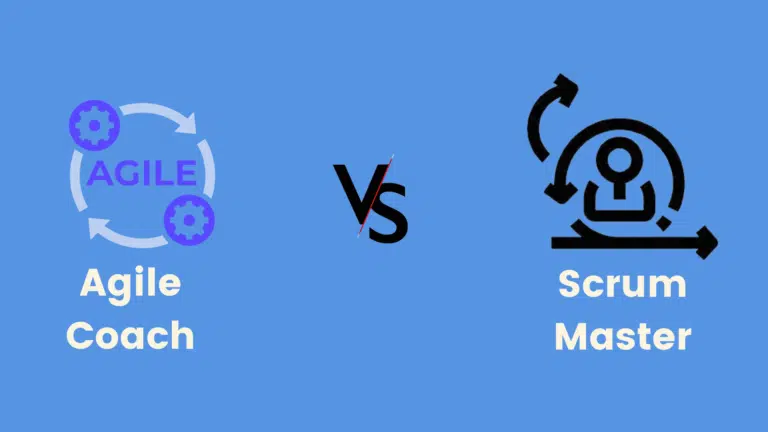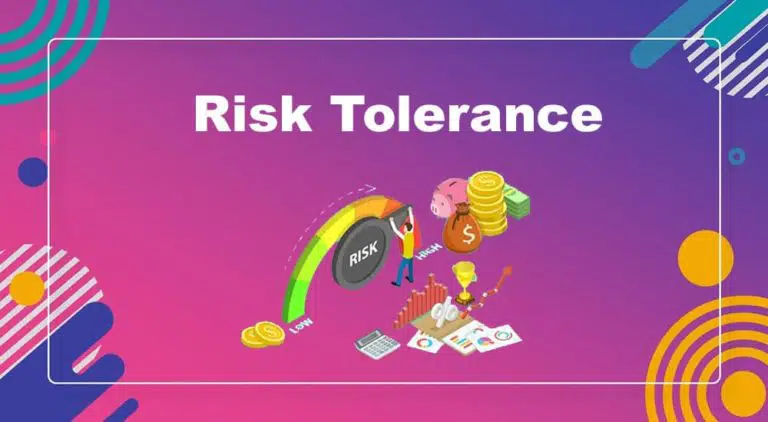Effective management styles are the key to guiding teams to success. Management styles comprise many approaches and techniques that managers use to motivate and guide their employees and/or team members.
Knowing each management style is essential for building a positive work environment and creating sustainable growth opportunities for your organization.
In today’s article, we will go through 9 management styles you can use to guide your team, along with their examples, pros, and cons.
But first, let us understand the management styles.
What is a Management Style?
A management style is a way of working where a manager organizes, plans, delegates, makes decisions, and manages their employees or team. Each manager has a different style of management depending on the organization, team behavior, industry, culture, management level, operating country, etc.
Effective managers adjust their management style to fit organizational goals, team requirements, targets, etc.
9 Best Management Styles to Guide Your Team
The following are the 9 top management styles you can use to guide your team under different situations:
1. Visionary Management Style
A visionary or charismatic manager can convince employees to focus on and believe in a purpose. A visionary manager conveys the organization’s vision and inspires the team to work hard to achieve goals. These managers believe in allowing their team members to take on routine work and interfere in prominent decisions.
The visionary management style involves motivating, encouraging, inspiring, aligning the team with the bigger goal, and providing them with the support they need throughout the process.
Visionary managers allow their team members to work on their terms, provided they are productive and working towards the end goal.
When team members have control over their jobs, they feel satisfied and connected and complete the job enthusiastically.
However, managers regularly check on team members to see whether they are facing any issues.
This management style is used with self-driven, motivated team members who work well with authority. When team members reach the top level, they like to work independently with minimal interference; this is when a visionary manager is the right fit.
Example of the Visionary Managership Style: Steve Jobs
In 2007, Apple’s visionary leader, Steve Jobs, transformed the tech landscape of the mobile phone industry with the launch of the iPhone. Jobs drove innovation, personally engaged in design, and inspired a culture of creativity. He communicated a compelling vision by rallying his team toward the shared goal of creating a revolutionary device.
Anticipating consumer needs, Job ensured that the iPhone met and exceeded expectations. His decisive actions and commitment to excellence demonstrated his visionary leadership style, leaving an enduring impact on technology and solidifying his legacy as an industry pioneer.
Pros
- Inspires and motivates teams
- Aligns employees with a shared vision
- Encourage innovation and creativity
- Builds a positive organizational culture
- Enhances employee engagement
Cons
- May lack practical implementation guidance
- Potential for overemphasis on future goals
- Requires effective communication skills
- Not ideal for short-term results
2. Democratic Management Style
A democratic or collaborative manager is the opposite of an authoritarian (discussed below). In this management style, managers care about employees’ opinions. These managers encourage employee participation and welcome a difference in opinion.
In a democratic management style, the managers make decisions based on the majority opinion. The goal of democratic managers is to grow the company and its employees. These managers always seek suggestions and potential solutions to solve organizational issues.
The final decision-making authority still lies with the manager; however, democratic managers also consider the opinions of their team members.
A democratic management style works best in dynamic organizations with skilled, experienced team members who appreciate group participation. However, it backfires when employees are inefficient and incapable.
Depending too much on employees’ opinions can also negatively affect the manager’s authority.
The democratic management style is useful in most cases as it involves taking multiple viewpoints and making decisions after a thought analysis. It motivates team members, and they feel empowered and connected with the team’s goals.
Pros
- Increased employee engagement
- Enhanced creativity and innovation
- Improved morale and job satisfaction
- Inclusive decision making
- Promotes collaborative work environment
- Builds trust and team cohesion
Cons
- Time-consuming decision making
- Potential conflict and disagreement
- Difficult to manage large teams
- Difficult to maintain order and discipline
Example of the Democratic Management Style: Satya Nadella
Satya Nadella, Microsoft’s leader, uses the democratic management style. Using open dialogue, Nadella created an inclusive environment where team members felt empowered to share ideas. He sought input for decision-making from various organizational levels.
Nadella encouraged collaboration and innovation by valuing diverse perspectives. Under his managment, Microsoft underwent a cultural shift to collective problem-solving. Nadella’s commitment to inclusivity positively impacted the company’s direction.
3. Transformational Management Style
This management style inspires employees to think creatively and provide innovative ideas and solutions.
Consider a manager who tells you what to do and makes you feel excited and motivated. They have a big dream, and they share it with you, thus making you believe that you can be part of something important. These managers create a positive, energetic atmosphere. Employees are happier, more dedicated, and more motivated under these managers.
They show confidence and passion in their goals. A transformational manager influences and encourages everyone around them to perform their best. They don’t just care about the work tasks but also the personal growth of their subordinates. They inspire others to go beyond their limits by being strong examples.
This management style is about getting the job done and creating a passionate team committed to achieving something great together. These managers motivate everyone and encourage employees to work hard and reach their dreams.
Example of the Transformational Management Style: Reed Hastings
As the co-founder and CEO of Netflix, Reed Hastings shows a transformational management style. He communicated his vision and steered the company towards innovation in the entertainment industry. By setting a bold example, he instills confidence and passion within the organization, creating a culture of continuous improvement.
Hastings influences and motivates his team to surpass conventional boundaries and drives Netflix to evolve from a DVD-renting service to the world’s most valuable streaming service provider. Hastings inspires a commitment to excellence through his leadership, emphasizing individual and collective growth. He made Netflix a trailblazer in the ever-changing world of digital entertainment.
Pros
- Build Agile teams
- Inspirational leadership
- Increased employee morale
- Innovation and creativity
- Strong team cohesion
- Enhanced employee performance
Cons
- Time consuming
- Creates a dependency on the leader
- Causes resistance to change
- Not suitable for all situations
- Overemphasis on positivity
4. Coaching Management Style
The coaching management style is like having a helpful guide for a manager. Imagine a manager who doesn’t just tell you what to do but helps you learn and improve. This manager is like a coach who is guiding you to reach your goals. They actively share their knowledge and skills, showing you how to improve things.
A coaching manager encourages you to ask questions and helps you find solutions independently. They provide feedback—not to criticize but to help you grow and improve. This style is about building employees’ skills and confidence.
A coaching manager is like a teacher on your work journey, always there to help you develop and become the best version of yourself. It’s like having someone who cares about your success and is dedicated to helping you learn and improve every step of the way.
This style is useful when managers are in a position to help their subordinates grow professionally. This management style is more useful for people-focused roles such as sports, training, development, etc. than project management or other business fields.
Example of the Coaching Management Style: Howard Schultz
As the former CEO of Starbucks, Howard Schultz showed the coaching management style. Schultz guided and supported his team, sharing knowledge of the coffee industry and business strategies. He engaged in one-on-one discussions, offering personalized advice to help employees grow and develop their skills.
Schultz emphasized continuous learning, encouraging open communication, and developing an environment where coworkers felt empowered to seek guidance. Through his coaching approach, Schultz played a pivotal role in cultivating a culture of innovation and excellence, contributing to Starbucks’ success and the professional development of countless individuals within the organization.
Pros
- Facilitates employee development
- Builds strong employee skills
- Enhances individual performance
- Promotes continuous learning
- Promotes open communication
- Strengthens employee engagement
Cons
- Requires resources
- Employees may leave the company
- Time intensive for managers
- Requires effective communication skills
- Not always applicable in crisis situations
- Potential overemphasis on individual growth
5. Authoritarian Management Style
An authoritarian manager puts themselves at the top of the hierarchy and follows a top-down management approach. They work towards an organizational goal and ensure that each employee follows suit without paying much attention to employees’ career development.
These managers assert strong authority over decisions and employees and have complete control over decision-making, defining roles, reporting structure, and responsibilities. They care less about employee growth and expect total obedience.
An authoritarian manager is focused on the organization’s goals. These managers work best in traditional cultures with less experienced employees.
This management style is not useful in most cases as it demoralizes team members who feel disempowered and are always on edge. You can use an autocratic style management style when there is an emergency and you need to get things done quickly without seeking input from team members.
Pros
- Faster decisions
- Clear hierarchy and authority
- Consistent execution
- Efficient in crises
- Maintains order and discipline
Cons
- Demoralizes team
- No diverse input
- Hinders creativity and innovation
- Lack of flexibility
6. Laissez-Faire Management Style
Here, managers let team members work independently and allow them to make decisions. Managers do not guide their team members unless they ask for help. They don’t even don’t clearly communicate their vision to their employee.
The laissez-faire management style places importance on employee freedom. As the term means ‘let do’ in English, this is precisely what laissez-faire management practice. They let their team members do what they think is best.
Managers don’t interfere with the work, but the team must meet certain expectations. Employees have decision-making power and can seek the manager’s help as needed.
This management style is best used with self-driven, self-motivated teams that need minimal guidance. Such team members are experts in their fields and do not require managers’ guidance.
This management style does not work well when less experienced employees lack self-guiding discipline. This management style is ineffective in such cases because employees will feel lost without guidance.
This management style gives team members total freedom, causing them to lose control, team members can go directionless, and team cohesion may break. If the team members are inexperienced, it will be chaos.
This management style is useful for a team of highly expert personnel or top-level stakeholders.
Pros
- Freedom to work
- Encourages creativity and autonomy
- Promotes innovation and initiative
- Allows flexibility in work approach
- Supports individual growth
- Promotes relaxed work environment
- Effective for highly skilled teams
Cons
- No clear vision
- Lack of direction and guidance
- Potential lack of accountability
- Inconsistent decision making
- Difficult to manage inexperienced teams
7. Transactional Management Style
The transactional management style uses rewards, bonuses, and tangible and intangible incentives to motivate team members to perform better. This management style also includes punishment like warnings, pay cuts, and notices for underperforming employees.
Transactional managers focus on improving the team’s optimal performance to reach organizational goals. This management style can be used for projects or teams with strict deadlines and employees who are only motivated by rewards.
Rewards can be intrinsic and extrinsic.
Extrinsic motivation (e.g., monetary rewards) diminishes over the long term and can diminish a team’s intrinsic motivation to perform better. Intrinsic motivation is better for employees, as its impact lasts longer. Using intrinsic motivation, you can reward employees with better assignments, training, etc.
Pros
- Motivates competitiveness among employees for better performance
- Defines clear performance expectations
- Provides clear structure and organization
- Rewards performance and productivity
- Efficiently monitors employee performance
- Effective in stable and routine environments
Cons
- Short-term motivation
- Demotivates low-performing employees
- Provides limited employee autonomy
- Potential low employee morale
8. Persuasive Management Style
A persuasive management style refers to managers with strong control, centralized reporting, and decisions based on the manager’s and team’s opinions. It is a diluted version of the autocratic style since persuasive managers encourage questions, respond to their team members, and guide them toward better performance.
In this management style, the manager discusses issues with team members to reach a decision. Employees are motivated to perform better through persuasive methods like creating urgency, connecting emotionally, and providing evidence to support the project’s progress instead of using the reward and punishment system.
Managers use this style when they are experienced and skilled, and there is clear communication between the manager and the team. The manager can persuade the employees to enhance their productivity and build their team’s confidence.
Pros
- Effective communication and influence
- Quick decision making
- Encourages alignment with vision and goals
- Creates a sense of urgency
- Useful in crisis situations
Cons
- May overlook diverse perspectives
- Relies heavily on manager’s persuasion skills
- Risk of perceived authoritarianism
- Short-term focus
- Less sustainable
9. Servant Management Style
In servant management, managers put people first; they care about their team more than the task or team output. They put effort into keeping employees happy and building a cohesive and cooperative team. They believe a motivated employee and a cohesive team perform better.
Here, managers sometimes fail to keep the team satisfied and forget about the project objectives or the team goal, negatively affecting performance.
This management style is useful when team members are experienced, skilled, and self-guiding.
Pros
- Engaged team members
- Emphasizes employee well-being
- Promote a positive work environment
- Builds strong employee-manager relationships
- Encourages empathy and compassion
- Supports team collaboration
Cons
- Potential exploitation and/or manipulation
- Difficult to make decisions in certain situations
- Time-consuming due to high engagement
How to Choose Your Ideal Management Style
#1. Analyze Your Natural Style
Everyone has a unique management style. For example, some managers are better at delegating work and trusting their employees, making them natural democratic leaders. On the other hand, some managers have difficulty transferring responsibility to their team members and prefer working according to their own rules, making them natural authoritarian leaders.
Identifying your natural management style is important to understand the style best suited for managing the team.
#2. Identify Team Requirements
Some teams are self-driven and need the freedom to work effectively. In this case, a mixture of democratic and laissez-faire management styles can be used. After identifying their management style, managers should analyze their team’s behavior and the required motivation for productivity.
A mixture of visionary and transactional management styles can be used if the teams require constant motivation and encouragement.
#3. Find a Balance Between Your Manager’s and Team’s Personalities
After analyzing their team’s requirements and your natural management style, managers must find a balance between the two. Managers should select their management style based on the team’s requirements, as it will affect their performance.
It is essential to use the style that suits the manager best so they can guide the team naturally and effectively.
#4. Define Your Corporate Culture
Corporate culture is the combined belief and behavior between employees and management. The corporate structure impacts the management style that best fits a team, as it helps managers analyze the most suitable management style at that time.
For example, during major organizational structural changes, the visionary style helps managers keep the team focused yet stress-free. However, if the corporate structure suggests that the team is highly demotivated, transactional and persuasive styles can help to impact their productivity positively.
#5. Implement Your Management Style
After identifying the right management style, the last step is implementing it. If a single approach is best suited, apply the approach to enhance the team’s efficiency. However, if more than one management style is necessary, apply the hybrid approaches, which means using the best management style based on the situation.
Management Style Vs Leadership Style
Management style revolves around tasks, processes, and achieving organizational objectives. A manager plans, organizes, and controls resources to meet specific goals. This includes delegation of duties, efficient use of resources, and adherence to established procedures. A manager ensures that the team’s efforts align with the overall strategy and objectives of the organization.
Leadership style is about influencing a team to achieve shared visions and goals. A leader motivates team members, promotes collaboration, and creates a positive work culture. Leadership involves effective communication, setting a compelling vision, and encouraging innovation. Unlike management, leadership is associated with a more people-centric approach, in which the leader acts as a role model and motivator.
An organization requires a combination of effective management and inspirational leadership. Managers ensure the efficient functioning of day-to-day operations, while leaders inspire and guide the team to long-term success.
Frequently Asked Questions
1. What is a management style?
Management style is an approach a manager uses to lead and guide their team. It includes how decisions are made, communication is handled, and overall leadership is executed.
2. Why is a management style important?
A manager’s style significantly influences team dynamics, productivity, and employee satisfaction. It sets the tone for the work environment and can impact organizational culture.
3. Which is the best management style?
There is no universal “best” management style, as effectiveness depends on various factors such as organizational culture, team dynamics, and the nature of tasks. However, a management style combining democratic and transformational approaches is often considered effective. This approach encourages collaboration, empowers team members, and promotes a positive work environment, promoting productivity and employee satisfaction.
4. How do I determine my management style?
Reflect on your managment approach, communication style, and decision-making methods. Seek feedback from team members and assess your strengths and weaknesses as a leader.
5. What is the difference between leadership and management?
While managers focus on tasks and processes, leaders inspire and motivate their teams. Leadership styles often involve a more visionary and people-centric approach, whereas management styles may be more task-oriented.
6. Can a manager change their management style over time?
Yes, managers can evolve and adapt their style based on experience, feedback, and changes in the work environment. Continuous self-reflection and a willingness to learn are key to successful adaptation.
7. How can I develop and improve my management style?
Seek professional development opportunities, mentorship, and feedback. Stay informed about management trends and best practices. Additionally, consider seeking input from your team to understand their perspectives on your management style.
8. Which management styles should we follow, and which we should avoid?
According to Les Roches, you should use the following approaches: visionary, transformational, democratic, and coaching. And avoid these approaches: servant, laisses faire, transactional, etc.
Conclusion
Every team is unique and requires a different management style, depending on the situation, requirements, and culture. Therefore, managers should understand each style to make their team more efficient.

I am Mohammad Fahad Usmani, B.E. PMP, PMI-RMP. I have been blogging on project management topics since 2011. To date, thousands of professionals have passed the PMP exam using my resources.







